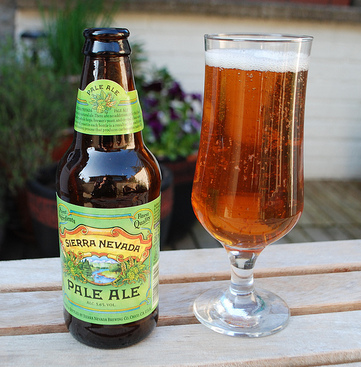Check Out Premium Galveston Whiskey: Top Picks and Distilleries
Check Out Premium Galveston Whiskey: Top Picks and Distilleries
Blog Article
Opening the Mysteries of Distillery Processes: A Thorough Overview
Within the realm of distillery procedures lie intricacies that commonly remain veiled to the laid-back viewer. From the careful art of mashing and fermentation to the alchemical transformations that take place throughout distillation, each step holds its very own secrets waiting to be unwinded. As we venture into the midsts of spirit aging techniques and the accuracy of quality assurance measures, a tapestry of scents and flavors arises, formed by classic customs and cutting-edge practices. Join us as we embark on a trip to demystify the enigmatic world of purification, where scientific research meets creativity in an unified mix that captivates the detects.
The Art of Mashing and Fermentation
In the distillery procedure, the art of mashing and fermentation plays a crucial duty in changing raw products right into the first stages of alcohol production. Mashing involves the process of damaging down the starches in grains like barley, corn, or rye, right into fermentable sugars.
Yeast, a crucial player in this phase, is added to the wort to start the fermentation procedure. This transformative process typically takes numerous days to complete, depending on the wanted alcohol web content and taste profile.
Mashing and fermentation are detailed processes that establish the foundation for the alcohol that will become distilled and matured to produce an end product with distinct characteristics and tastes.
Comprehending the Purification Process
One of the essential phases in the production of alcohol involves understanding the distillation procedure. Purification is a method utilized to separate alcohol from the fermented liquid, normally through home heating and cooling down procedures.

Comprehending the distillation procedure is critical for distillers to manage the high quality, stamina, and preference of the alcohol being created. By understanding the art of distillation, distilleries can produce a vast array of spirits with distinctive attributes that attract various consumer choices.
Secrets of Spirit Aging Methods
Exploring the details of spirit aging methods introduces the hidden virtuosity behind the development of nuanced tastes and fragrances in distilled beverages. The aging process is a critical point in the manufacturing of spirits, where the fluid interacts with the oak barrels, taking in compounds that enhance its account gradually. One of the tricks to successful aging hinges on the selection of barrels. Distilleries typically utilize charred oak barrels, which give one-of-a-kind tastes to the spirit via a process of extraction and oxidation. The period of aging is one more essential aspect that distillers carefully control to achieve the wanted go now preference profile. Longer aging periods often tend to lead to smoother, a lot more intricate spirits, while shorter durations may highlight vibrant, vibrant qualities.
Furthermore, the ecological conditions in which the barrels are saved play a substantial role fit the final item. Fluctuations in temperature level and moisture can affect the rate of aging and the communications between the spirit and timber. Master distillers masterfully navigate these variables to craft spirits with unique characters, embodying the culmination of cutting-edge techniques and classic customs.
Quality Assurance and Testing Techniques
The precise workmanship showed in selecting barrels and controlling aging durations in the spirits manufacturing procedure underscores the essential value of stringent top quality control actions and precise screening methods (Distillery in Galveston). Quality assurance in distilleries includes multiple phases to make certain that each set fulfills the wanted standards. From resources assessment to end product evaluation, each action is essential in keeping consistency and quality
One necessary element of top quality control is sensory analysis, where experienced professionals assess the aroma, taste, and total high quality of the spirits. Chemical analysis strategies such as gas chromatography my sources and mass spectrometry are employed to find any contaminations or variances from the wanted composition. Additionally, physical examinations like thickness measurements and pH analysis supply additional understandings right into the product's characteristics.
To assure adherence to inner criteria and regulative requirements, distilleries additionally carry out microbiological screening to examine for any microbial contamination that could impact the product's safety and life span. By carrying out robust quality assurance and screening techniques, distilleries can support their reputation for creating costs spirits consistently.
Discovering One-of-a-kind Flavor Mixtures

In the process of taste infusion, the picked botanicals are contributed to the base spirit and delegated emaciate or high for a given duration. This allows the alcohol to draw out the tastes and vital oils from the botanicals, causing an unified blend of tastes (Galveston Liquor). Distilleries might additionally utilize methods like vapor infusion or basket infusion throughout purification to pass on specific tastes to the spirit
Furthermore, some distilleries go with barrel aging or barrel completing strategies to present additional complexity and depth to their spirits through communications with the timber. These methods add to the creation of distinct taste accounts that attract a discerning target market looking for story and memorable drinking experiences.
Conclusion
Recognizing the scientific research behind these procedures is vital for producing high-quality spirits. By opening the enigmas of purification, distillers can create tasty and one-of-a-kind spirits that appeal to a wide variety of customers.
As we venture into the depths of spirit aging techniques and the precision of top quality control measures, a tapestry of scents and tastes emerges, formed by innovative practices and classic practices. web link Distilleries commonly utilize charred oak barrels, which impart special tastes to the spirit with a procedure of removal and oxidation.Using a diverse variety of ingredients and botanicals, distilleries can craft unique flavor infusions that set their spirits apart in an affordable market. Distillery in Galveston.In the process of flavor infusion, the selected botanicals are included to the base spirit and left to macerate or steep for a specific duration. Distilleries may also employ techniques like vapor infusion or basket mixture throughout distillation to give particular tastes to the spirit
Report this page